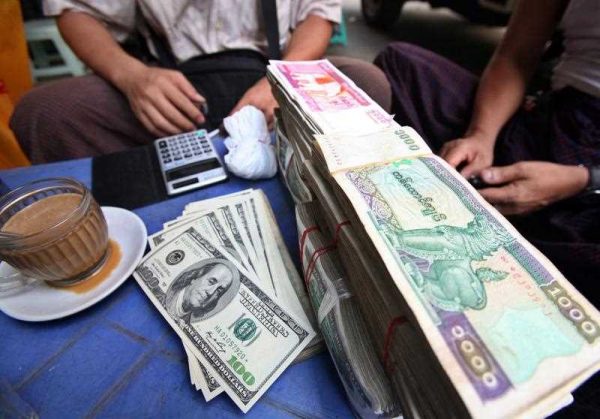Before the abolition of the official peg, the official exchange rate had been fixed at 8.5057 kyat per SDR without any adjustment since May 1977. The rate was left around 5 or 6 kyat per US dollar while informal market rates depreciated chronically, sometimes beyond 1300 kyat per US dollar. In terms of the disparity between the official and informal rates, this was the largest in the world. However, the grossly overvalued official rate was used only for fiscal accounting in the state sector. Thus, the devaluation of the official rate was mostly relevant to the state sector in order to clarify its financial position, which is indispensable for better public finance management.
In the private sector, the abolition of the official peg had rather minimal effects as it had not been used there. There had been in principle no surrender requirement on export earnings, and banks did not buy or sell foreign exchange with customers. Instead, private exporters and importers traded foreign exchange bilaterally or through informal brokers at free market prices, which constituted the informal market rates. In the absence of the formal channel for currency conversion, the sophisticated informal foreign exchange market emerged where the demand and supply were matched efficiently. When exporters and importers traded foreign exchange directly, there was no spread between the selling and buying rates. The informal foreign exchange market developed in tandem with the informal funds transfer system called hundi.
In the course of foreign exchange market reform, Myanmar’s central bank has tackled the challenge of establishing institutions for a formal foreign exchange market. In November 2011, the central bank issued authorised dealer licences to private banks and allowed banks to trade in foreign currency. In August 2013, the interbank market of foreign exchange was instituted under the guidance of the central bank, which is tasked to replace the daily foreign exchange auction between the central bank and authorised dealer banks. The new formal foreign exchange market, where the banks are expected to play the main role, would allow the central bank to conduct an exchange rate policy and accumulate international reserves.
Despite the introduction of a formal channel for currency conversion, however, the bulk of foreign exchange trade in the private sector has been taking place in the informal market. The banks are facing tough competition with the developed informal market, which operates on a very slim margin between selling and buying rates. The possession of foreign exchange among exporters and importers remains prevalent, hampering the accumulation of international reserves in the banking sector. At the same time, the central bank reference rate, which is the new market-based official rate determined in the daily foreign exchange auction, has been mostly following the informal rates rather than guiding them.
Furthermore, transactions in the interbank market of foreign exchange have been sluggish. In addition to the prevalence of informal market transactions, one of the reasons for this is that there is no facility for the banks to mitigate settlement risk in foreign exchange trade. As banks have not developed the practice of disclosing accurate financial information with each other, there is no trust. So foreign currency trades are at best spot transactions. These difficulties can also be seen in Myanmar’s poor score on the index of contract enforcement.
Foreign exchange market reform is now facing the negative legacy of two decades of junta rule, during which the sophisticated informal market evolved in the absence of formal market institutions. The foreign exchange transactions undertaken by the private sector in the informal market have been largely unaffected by the reform. Nurturing the institutions necessary for a formal foreign exchange market that can compete with the sophisticated informal market is far more difficult than merely abolishing the obsolete official pegging. And this kind of challenge is ubiquitous in the broader economic reform agenda in Myanmar. So far the central bank has been doing an excellent job, but there remains a long journey ahead for foreign exchange market reform.
Koji Kubo is a Senior Research Fellow at the Institute of Developing Economies, Japan External Trade Organization (IDE-JETRO), currently assigned to JETRO Bangkok.

